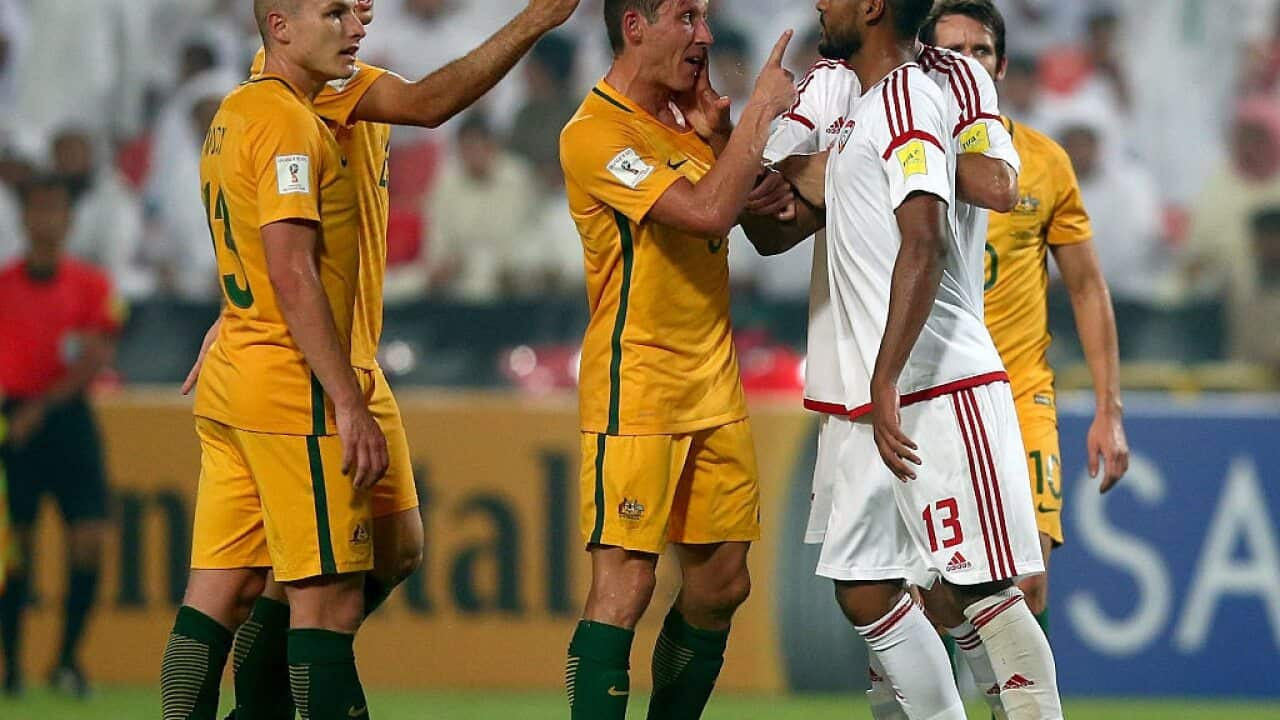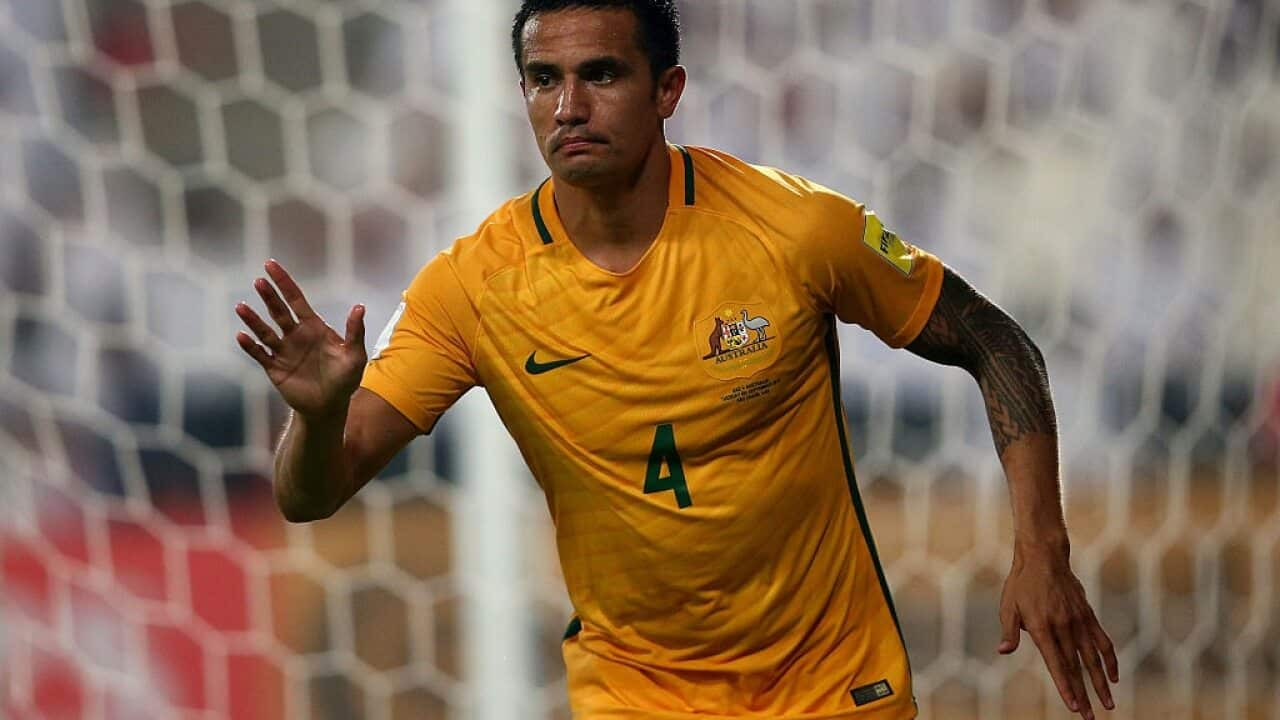The two recent games, against Iraq at home and UAE away, showed, against very different opponents, just how balanced the team is.
In the first game, a 2-0 win, the Socceroos excelled in attack as they were required to do.
Iraq came to defend, playing a 4-5-1 formation to keep the scoreline low.
The Australians probed and probed, created chances, hit the woodwork twice, before finally breaking down the stubborn Iraqi wall of resistance.
In the second game, the Socceroos were even more impressive, only this time in defence.
They played a far more ambitious team, in Abu Dhabi, that was rightly confident in the quality of their attackers after defeating Japan away a few days earlier.
That ambition lasted just ten minutes as the Emirati charged forward, after which the Aussies imposed themselves and controlled the game.
The home team, marshalled by the gifted Omar Abdulrahman, kept probing but the Australians soaked up everything.
The need to shift Mark Milligan forward as a replacement for the injured Mile Jedinak made no difference.
Milligan had one of his finest games, even by his standards, sweeping ahead of the commanding central defensive duo of Matthew Spiranovic and Trent Sainsbury.
Postecoglou changed his formation from a 4-4-2, with a diamond midfield, in the first game to a 4-3-3 in the second.
This was brave, given that the latter is a more attacking posture than the first.
Of course, there was no need to play a four-man midfield in the second game given that the UAE did not pack their midfield with five men like the Iraquis did.
Mostly it was Tommy Rogic, arguably Australia’s most gifted attacker of the current generation, who was impacted by this.
In the 4-4-2, he played as a classic number 10 at the apex of the midfield.
While in the 4-3-3, he played on the left flank of a midfield trio. Rogic excelled in both roles.
So Australia performed their task to the letter and Postecoglou deserves kudos for his planning.
The role of the squad’s celebrity player, Tim Cahill, is interesting.
Australia’s top scorer of all time did not figure in the first game at all.
In the second, he came on for the last 20 minutes, at 0-0, and made his customary impact by scoring the deciding goal.
Only Postecoglou knows why he is not starting Cahill or, rather, did not start him in the last two games.
It would be for one of two reasons or maybe both.
Postecoglou either no longer considers Cahill, at 36, to be a 90-minute player or he was simply benched because of a shortage of game time in recent months.
Either way, Cahill’s absence as a regular starter poses question marks.
Tomi Juric was chosen in the central striking role in both games but, while he didn’t play badly, he was subbed in each of the games.
I believe the coach is still learning who will ultimately be Cahill’s permanent replacement.
The only other question mark on selection seems to hover over the right back position.
Milos Degenek played there in the first game while Ryan McGowan filled the role in the second.
Degenek is a centre-back, while McGowan, despite his protestations, plays in a modest quality Chinese league.
The jury remains out.
Book of the week
I am starting a new service, specially for football bookworms.
With each TWG column, I will be recommending a football book to help you weed through the truckloads that are out there.
My first is: GAMES, GOALS, GLORY: The A-League’s Teams, Players, Coaches and Greatest Moments (Hardie Grant Books).
Pulled together by noted Australian football historian Roy Hay, this splendidly illustrated coffee-table hard cover will act as a splendid memento of the A-League’s first 11 seasons.
There are 17 chapters, accompanied by glorious photographs, written by ten contributors, among them Hay himself.
The others are well known football entities, Michael Cockerill, Joe Gorman, Andy Harper, Simon Hill, Andrew Howe, Richard Kreider, Melanie McLaughlin, Ange Postecoglou and Bill Murray, who co-wrote with Hay A History of Football in Australia, published a couple of years ago.
My only regret is that Postecoglou didn’t pen the chapter on coaches.











